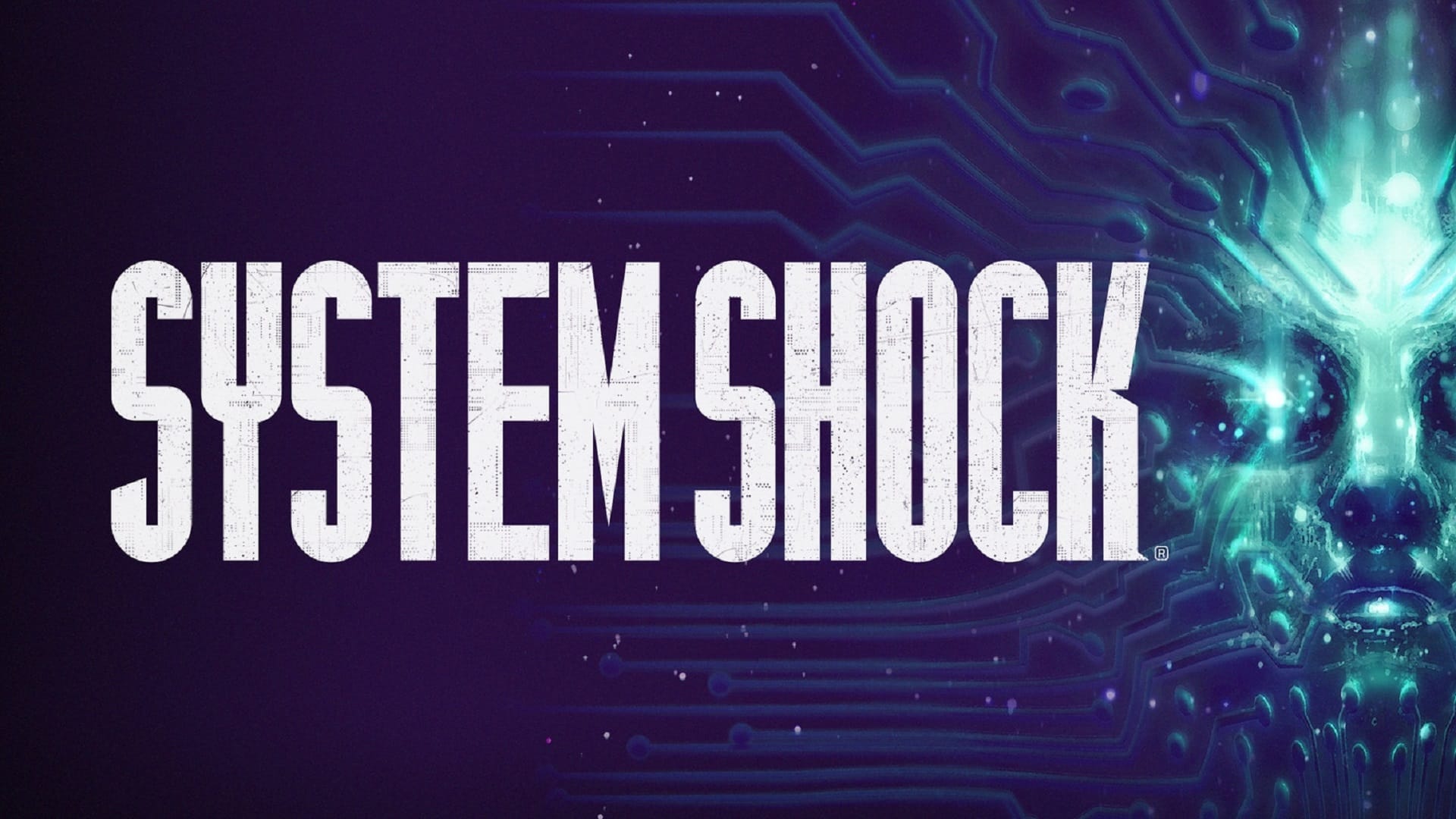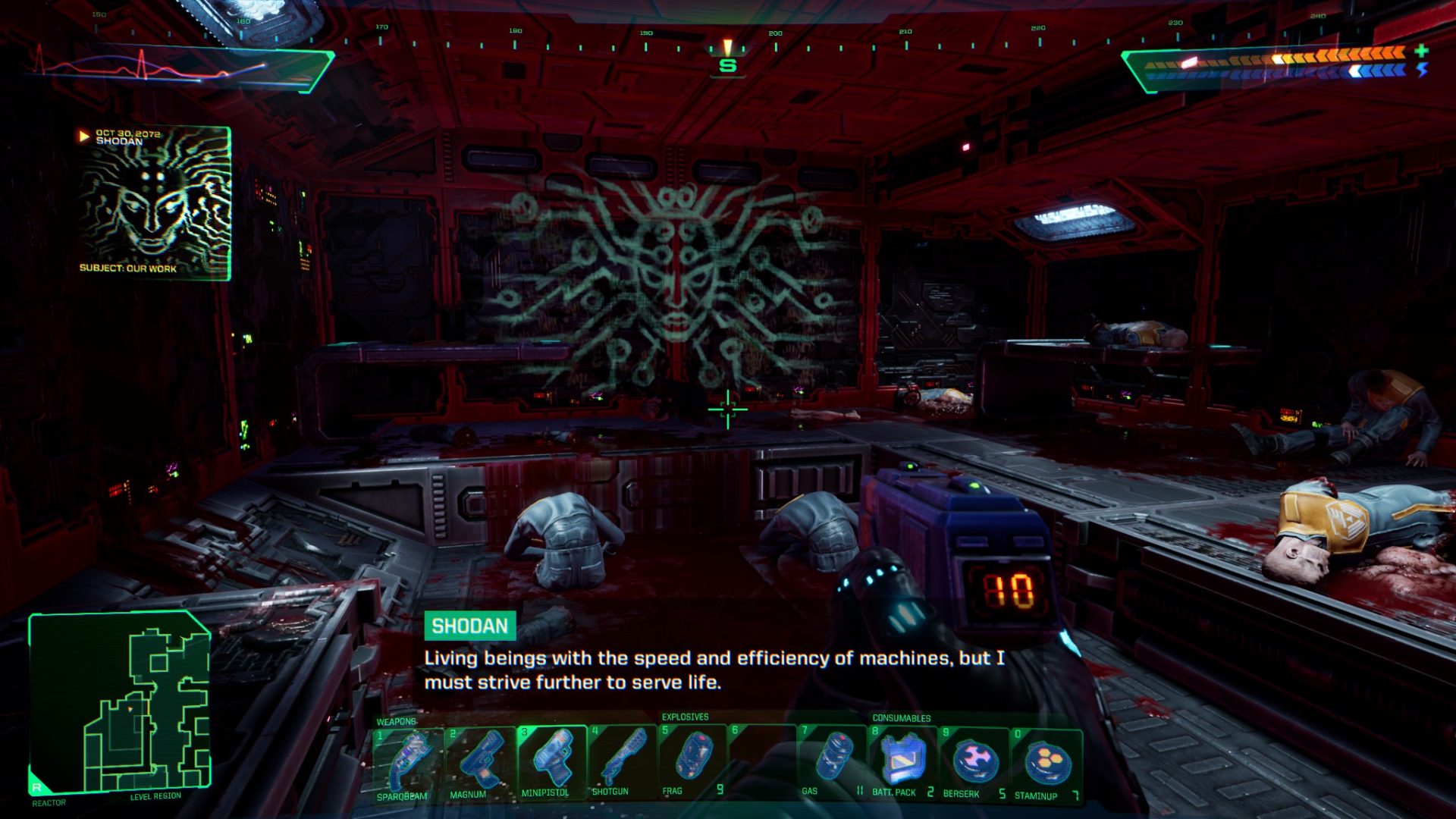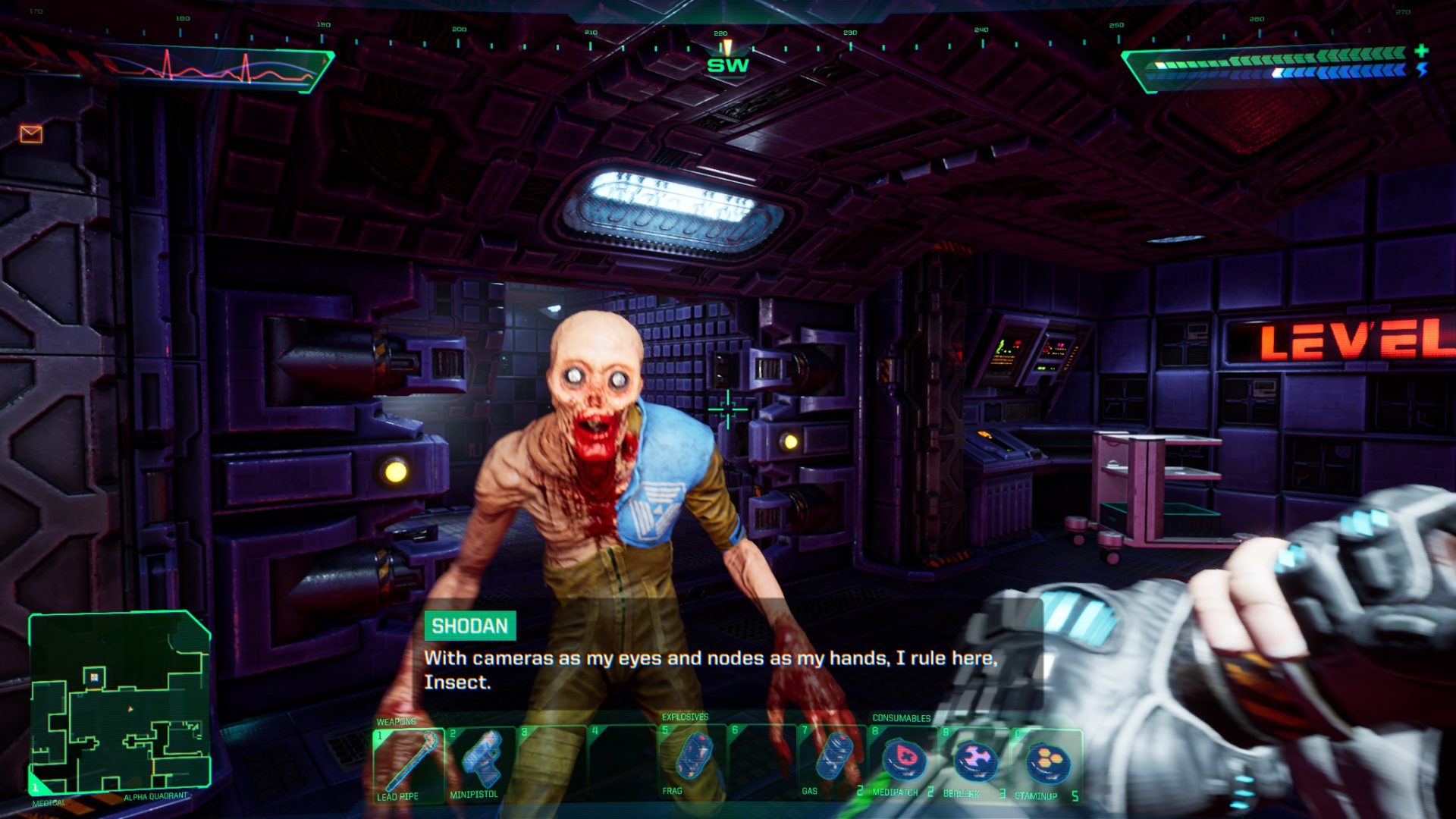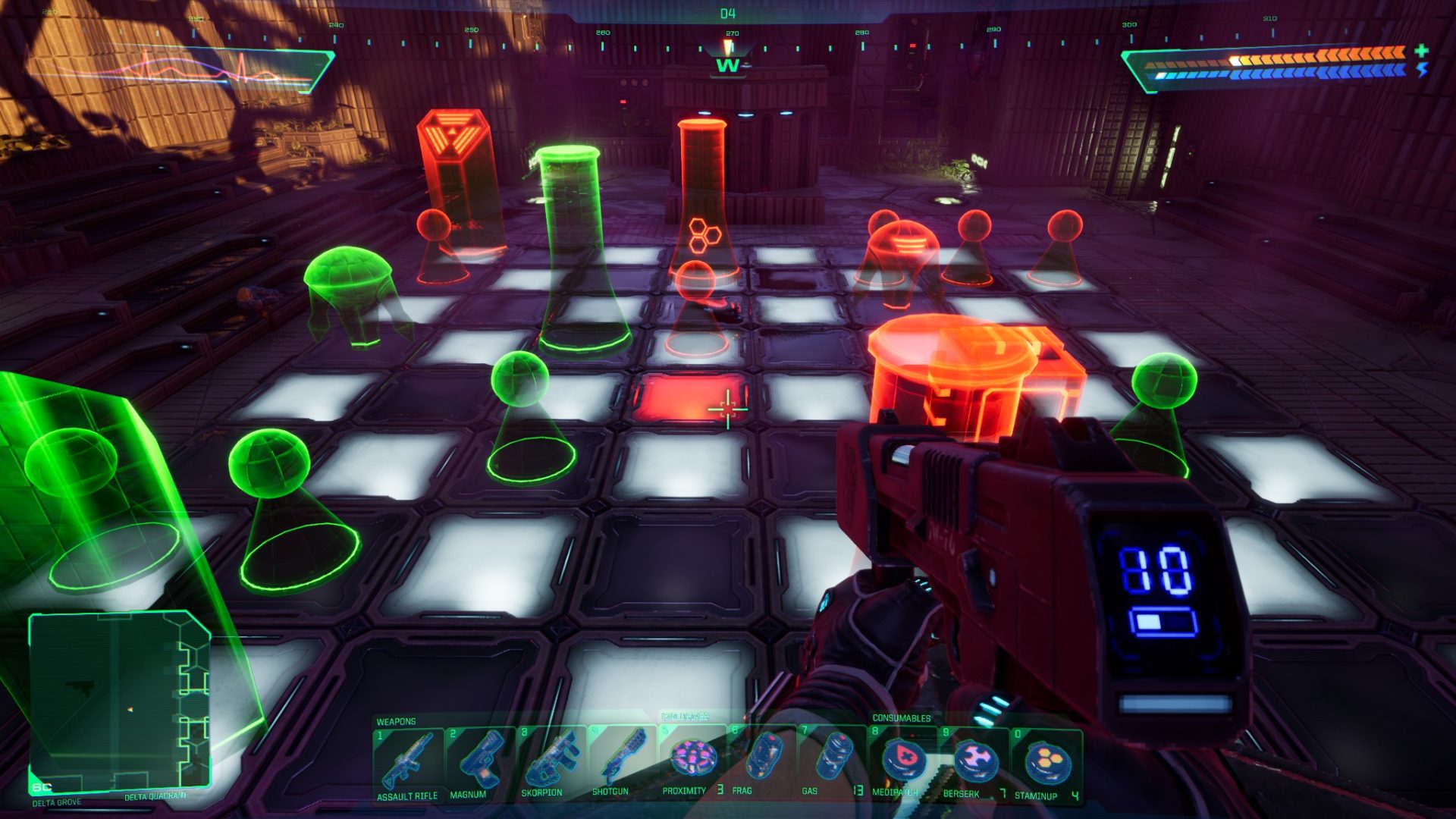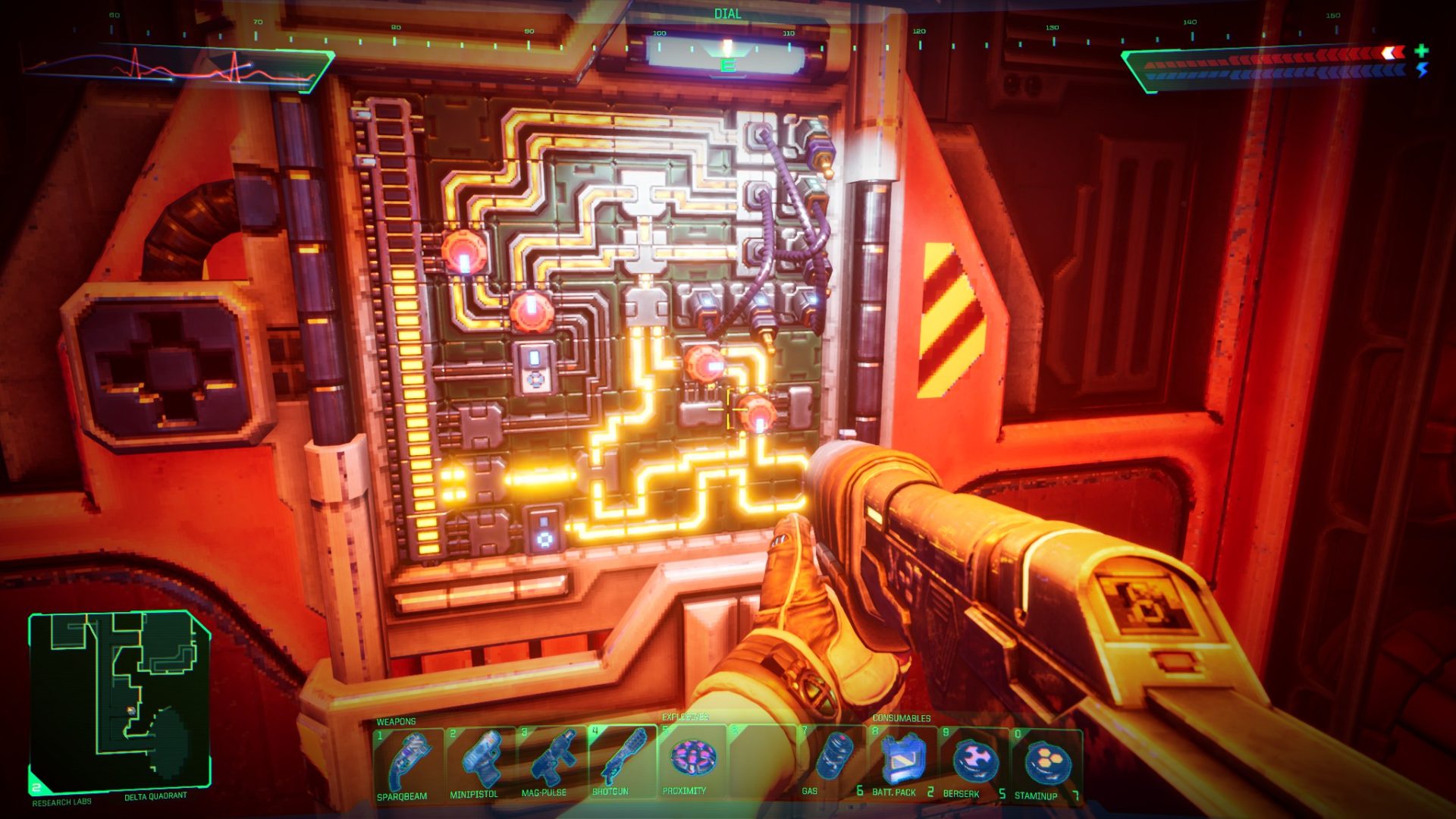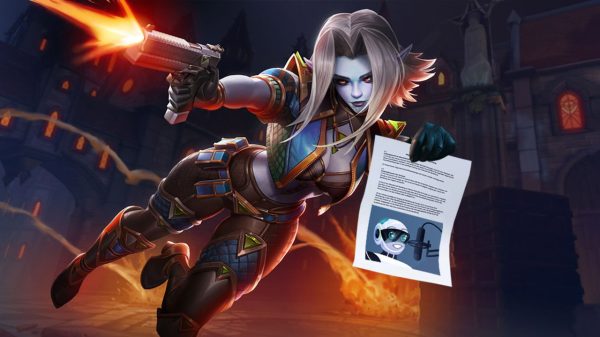System Shock 2. A titan among classic FPS games of the previous century. That and Half-Life were sewn into my adolescent brain as two of the most revolutionary first-person shooters of the 90s. A sequel that apparently outshone its predecessor according to many of the think pieces of the time found in my gaming magazine collection. One day, I hoped, I would see what all the fuss was about.
Well, I’ve since played this hallowed sequel and was impressed, but also left wondering why the legacy of the original game has been so outshone. Now I’ve spent the better part of 20 hours with Nightdive Studio’s ambitious remake of the 28-year-old millennial whose “Shock”-ing namesake has come to occupy a revered status in the shooter canon. System Shock comes to us like a loud smack delivered all the way from 1994, and has been a fascinating museum tour into a space station I wish to never return to.
Players control the cybernetically enhanced Hacker who is transported to the Citadel space station against their will. Here they are blackmailed into taking the safety limiters off the station’s AI, leading to the emergence of the famous video game villain, the proto-GLaDOS, SHODAN. The Hacker awakens on a SHODAN-controlled space station in which robots now rule and all surviving humans are either dead, mutated, or have become the testing flock for SHODAN’s cyborg master race.
Always use manners when talking to your chatbots. Or else.
Greed and vanity set SHODAN loose, breathing into the artificial intelligence a God-complex which seeks to destroy the Earth and lead a cybernetic, mutant uprising. As the nameless Hacker, you must now dismantle SHODAN’s systems from within and ensure the station cannot be weaponised against the Earth. To do this, you will spend a good ten hours crawling through maintenance tunnels filled with dodgy, gaseous pipes and poorly stored nuclear waste barrels. If you are lucky, you might make it five minutes into an adjacent corridor before an aimlessly wandering mecha-goon pulls itself unstuck from a door frame (its worst enemy), before absorbing your measly Nerf bullets and gunning you down.
The core loop of System Shock boils down to destroying CPU nodes on the various levels of the station, powering down the systems that SHODAN relies upon for control. Beginning in the bowels of the station with naught but a pipe, players will wrangle with lightweight and vaguely responsive combat as they seek to survive against all manner of mindless cyber slaves. Taking out security cameras (SHODAN’s eyes) further progresses this core goal of reducing her control. Eventually, players will find an elevator on a given floor which then begins a vertical ascent to the top of the station, causing SHODAN all manner of inconvenience in the process.
As far as remakes go, the visual rehaul in the Unreal engine brings System Shock well into 2023 territory. A fuzzy, softly pixellated haze covers the environment, which is also washed in occasionally sharp and atmospheric lighting. Deliberately and admirably, the game looks like a 90s sci-fi shooter where the low-fidelity art style has been gussied up with a liberal smattering of modern visual design. It is very cool.
Check this mug! Yet I’m the insect…
An eeriness pervades the hostile space station; the impressive lighting (and unsettling darkness) had me jump at times as enemies would launch from hidden enclosures. These enemy models run the gamut from comical, bug-eyed mutants to mechanically limbed, death-shredding cyborgs. While their variety is relatively slim and won’t wow modern players, they are amusing re-imaginings of what were likely fearsome foes 28 years ago.
Showing its age more evidently is the frustrating exploration into the unknown on each level of the station. Hallway upon hallway, the hacker is slowed down by all manner of locked doors, unclear objectives, and gratuitous backtracking. A typical example would be a station survivor radioing the hacker and alerting them to an objective. Problem is, the audio is played only once, not recorded, and the objective is nothing more than “head south on the next floor and look for a wall.” These hallways are labyrinths akin to an old-school dungeon crawler and every cardinal direction is blocked off by some manner of malfunctioning door or zigzagging layout. By the time you reach the objective’s floor sometime later, you will be pushed into tangents due to dying and respawning on the previous level, a series of locked doors, or simply needing to interact with every inch of the floors’ walls before finding some hidden panel that opens the path forward. Frustrating stuff. Don’t be scared to use a walkthrough, I had to. Multiple times.
Like subsequent SHOCK games such as BioShock, death does not mean progress is lost. After the opening hour, players unlock a respawn station. Upon a fatal mishap, the player is resurrected here and death is treated as a natural forward step in the narrative. The world state persists and slain enemies remain butchered, hanging from the ceiling and waiting for their moment to embrace gravity.
This virtual chess-like game is interesting, if you can get it to work
If that previous point doesn’t make sense, it’s because common bugs persist throughout the entirety of this game. My favourite is how persistent enemy states are treated when you leave or re-enter an area where you have slayed (or escaped) from SHODAN’s minions. Enemies seem to spawn into rooms as you approach the room they’re deemed to occupy. Even funnier, they spawn from ceilings, so throughout the game, I would hear a telltale thud and know that my area had just gotten busier. Oftentimes as I turned a corner in a corridor, I would see my victims further ahead just fall from the ceiling and resume their ragdoll state crumpled on the floor.
Some locked doors require players to hack into a cyberspace terminal. Cyberspace sections resemble a shitty throwback to the 90s Descent games. Players pilot some kind of disembodied being with full 360-degree controls, surviving interconnected arena onslaughts of enemies doing their shmup shtick and spraying neon bullets that the player character displays almost no feedback for. You fly through uninteresting corridors with no sense of being. You hover around and occasionally crash into walls, get shot at, explode and do it all again. Nauseatingly, it’s hard to know up from down. Shooting fails to activate a lot of the time, leaving the hacker as a sitting duck. There’s very little visual or audio feedback, the whole thing seems like a last-minute add-on, and I genuinely did not look forward to these sections.
Not for nothing, these puzzles were my favourite part of the game
Another kind of locked-door puzzle I came to greatly enjoy however, were the electricity junctions. Similar to the pipe puzzles that grew tiresome in BioShock, System Shock’s junction puzzles have you manage currents of varying voltages through a network of connections that can be rotated. The puzzles look initially dense and uninviting, but after a brief dabble turn out to be rather intuitive. Often rotating the conduits is half of the satisfying puzzle, with players then left to swap and change the voltage via a set of plugs to ensure the junction has the exact level of power required. If you try flooding the network with too much power, the conduits light up extra bold and look like they’re going to blow. These puzzles were the perfect complexity at any given stage of the game and broke up the frustrating exploration.
While there are heaps of ideas and imagination brewing within System Shock, my favourite moments involve the notorious SHODAN and others communicating with the player. SHODAN often tunes in and heckles the player when they progress past a certain challenging gate or will bemoan the player’s minor victories before warning that she’s setting the dogs loose. There are also audio logs that break up the room pilfering monotony which often tell two stories. The more interesting stories set the context for the space station, with pencil pushers noting concerning anomalies that appear to be caused by their station AI, or the IT team noticing and ignoring the early signs of selfish cognisance from the AI and alarmingly pushing it aside. Then there are the recorded cries of the crew members in their last moments before experimentation and mutilation as SHODAN actions their plan to neutralise Earth and start their own colony of cybernetic mutants. Consistently and throughout, the voice actors on these tapes don’t shy away from melodrama and heightened states of emotion, making them a genuine highlight to break up the claustrophobia and monotony. Shame that all audio logs have the same static screech bookending them.
Final Thoughts
System Shock may come as a rude awakening for some, myself included. This remake of an early 90s sci-fi shooter has a heap of great ideas for its time. But its time has long passed and has little to offer new audiences except for pain, frustration, and a prettied-up history lesson of a game. SHODAN, however, plays an entertaining host to a series of pipe-laden labyrinths that suffers no fools.
Reviewed on PC // Review code supplied by publisher
Click here for more information on WellPlayed’s review policy and ethics

- Nightdive Studios
- Prime Matter
- PC
- May 31, 2023








